50+ Sample Emergency Action Plans
-
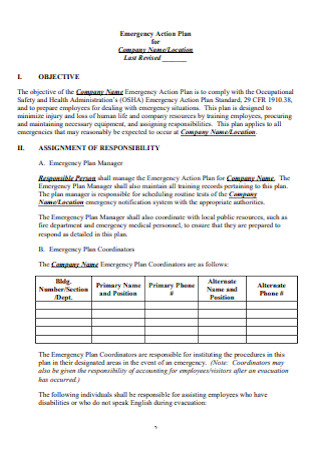
Company Emergency Action Plan
download now -
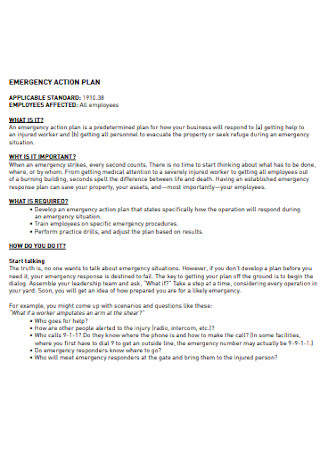
Emergency Safety Action Plan
download now -
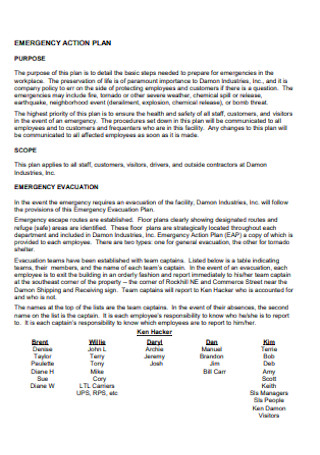
Industries Emergency Action Plan
download now -
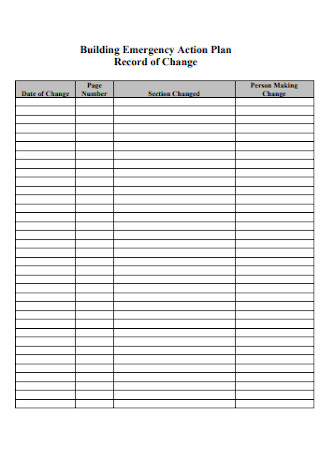
Building Emergency Action Plan
download now -
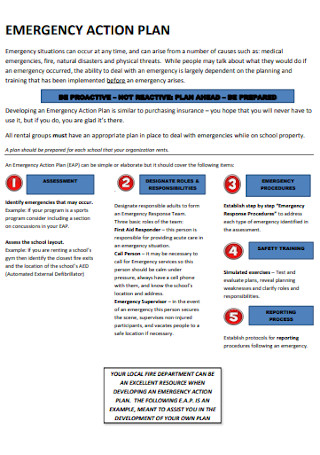
Sample Emergency Action Plan
download now -
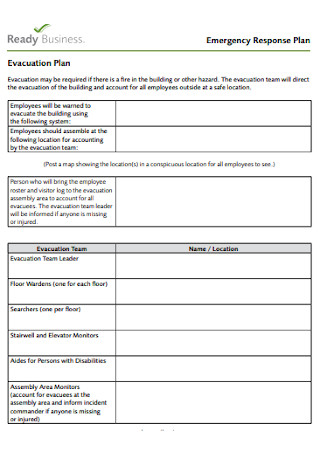
Emergency Response Action Plan
download now -
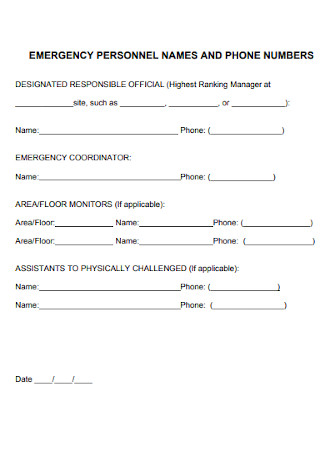
Emergency Personal Action Plan
download now -

Health Emergency Action Plan
download now -
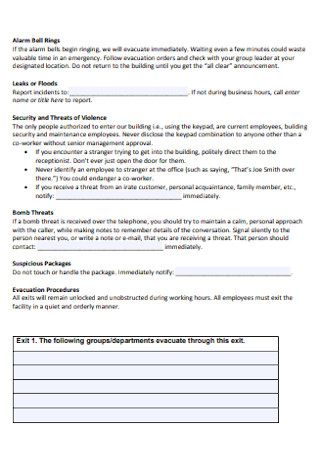
Simple Emergency Action Plan
download now -
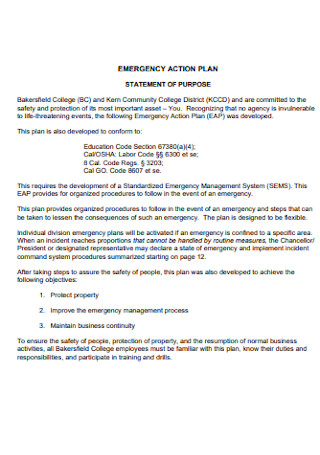
College Emergency Action Plan
download now -
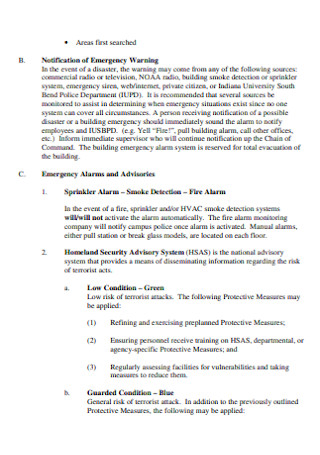
University Emergency Action Plan
download now -
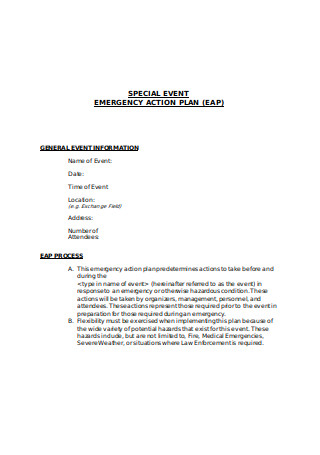
Event Emergency Action Plan
download now -
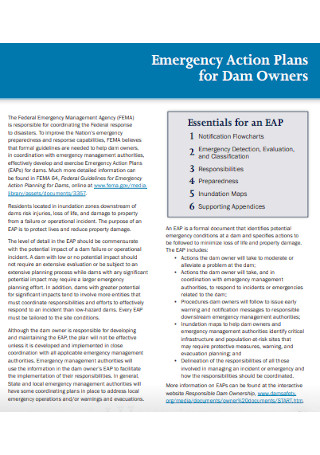
Emergency Action Plans for Dam Owners
download now -
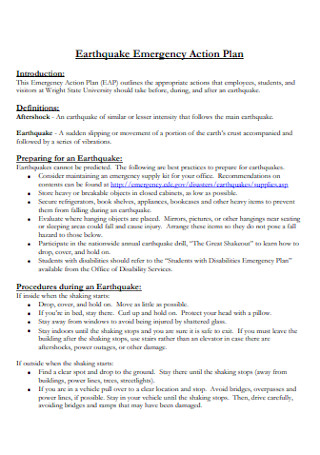
Earthquake Emergency Action Plan
download now -
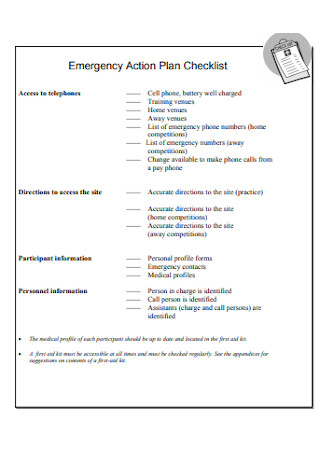
Emergency Action Plan Checklist
download now -
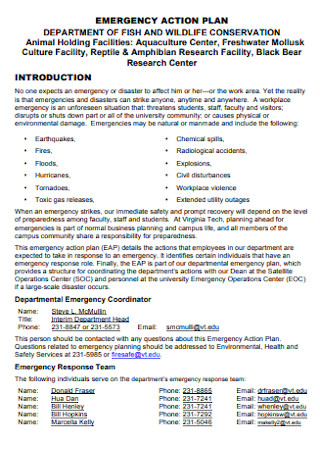
Basic Emergency Action Plan
download now -
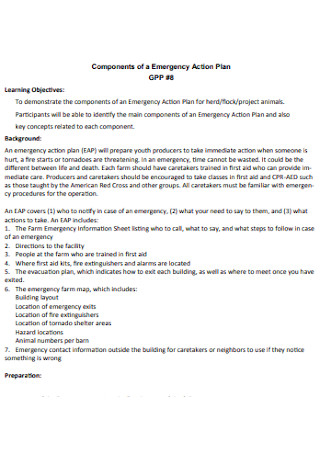
Components of a Emergency Action Plan
download now -
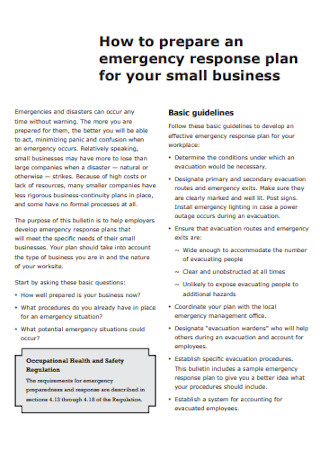
Business Emergency Action Plan
download now -

Building Emergency Action Plan Example
download now -
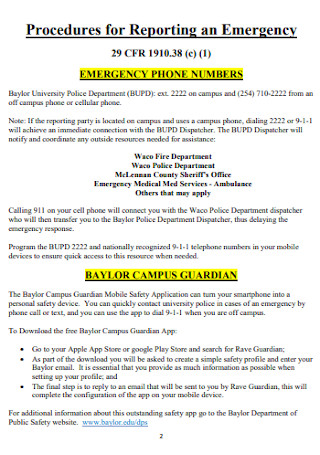
Emegency Phone Avtion Plan
download now -
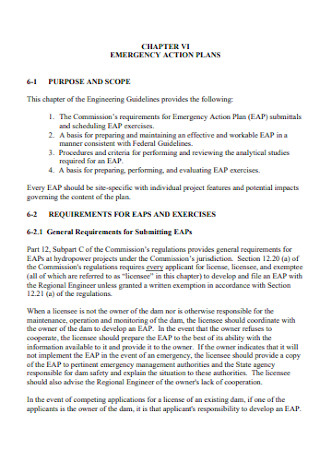
Formal Emergency Action Plan
download now -
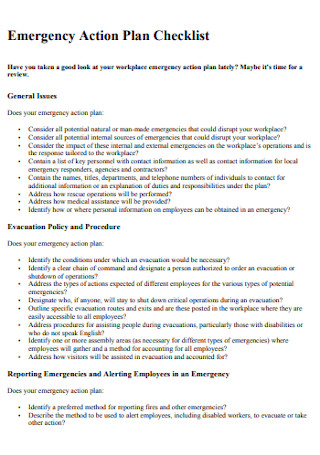
Emergency Action Plan Checklist Template
download now -
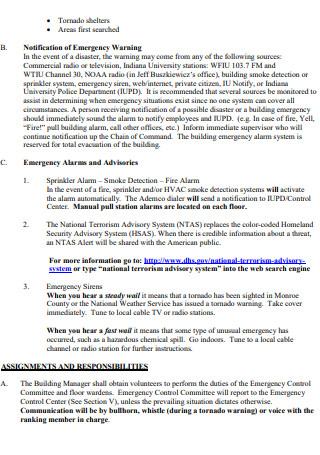
Emergency Warning Action Plan
download now -
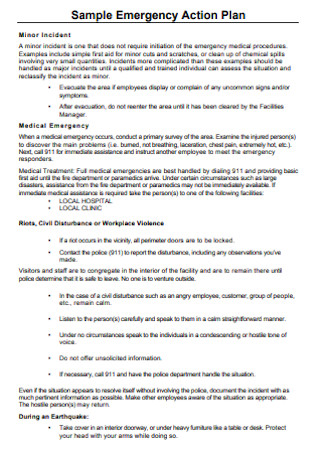
Sample Emergency Action Plans
download now -
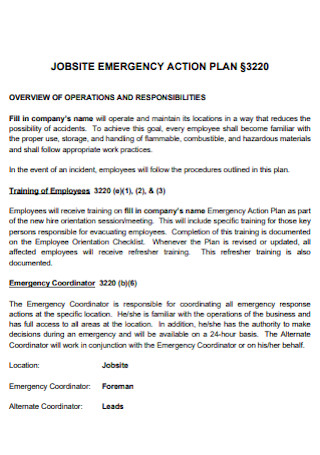
Jobsite Emergency Action Plan
download now -
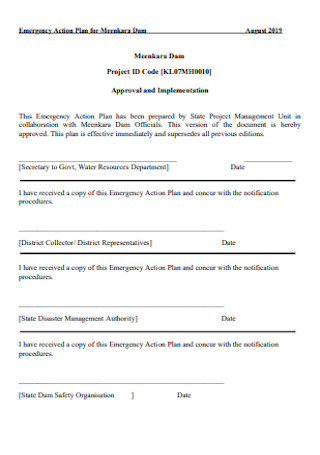
Emergency Action Plan for Dam
download now -
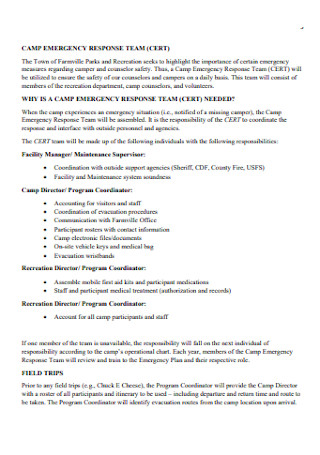
Camp Emergency Action Plan
download now -
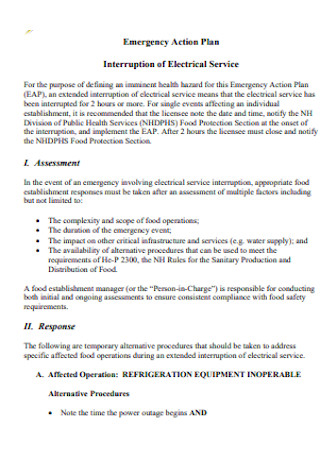
Emergency Action Plan for Food
download now -
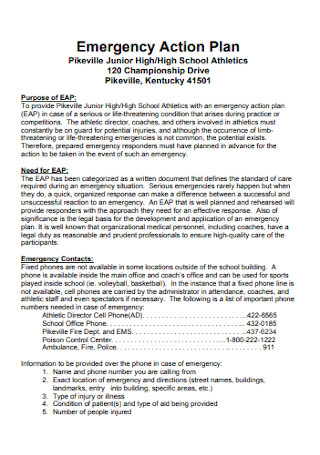
High School Emergency Action Plan
download now -
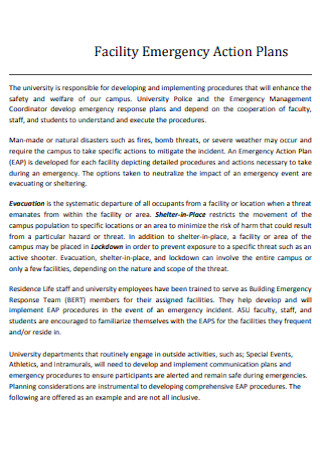
Facility Emergency Action Plans
download now -
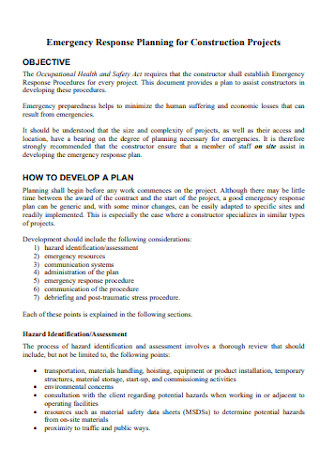
Emergency Action Plan for Construction Projects
download now -
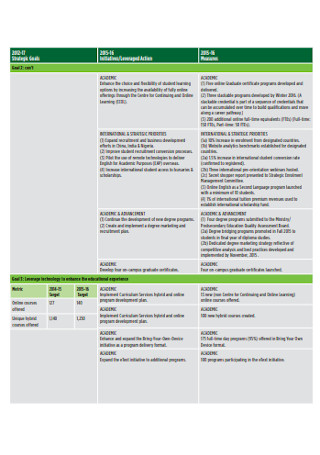
Emergency Budget Action Plan
download now -
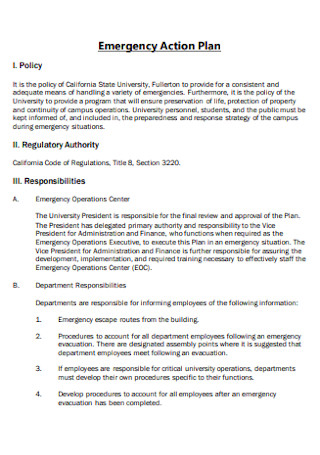
Programs Emergency Action Plan
download now -
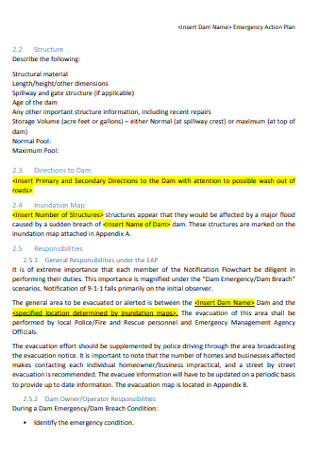
Dam Emergency Action Plan
download now -
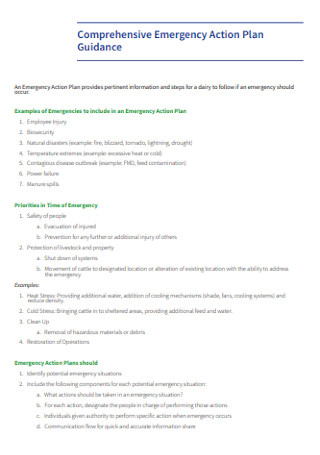
Comprehensive Emergency Action Plan
download now -
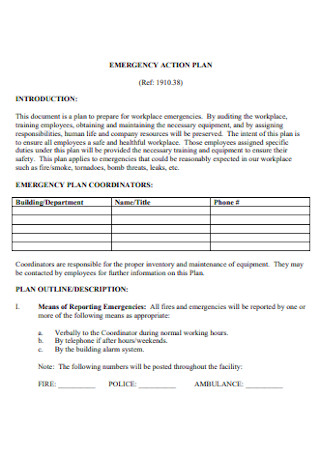
Fire Emergency Action Plan
download now -
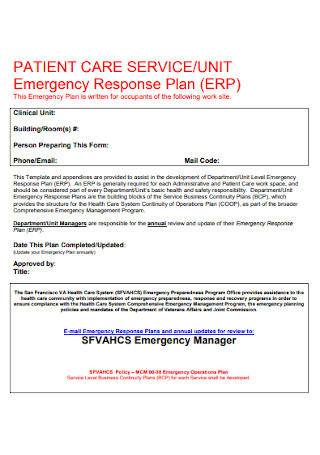
Patient Emergency Action Plan
download now -
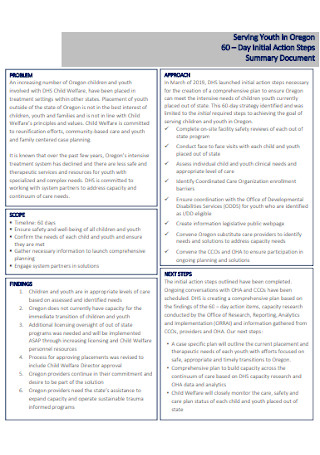
Emergency 60 Days Action Plan
download now -
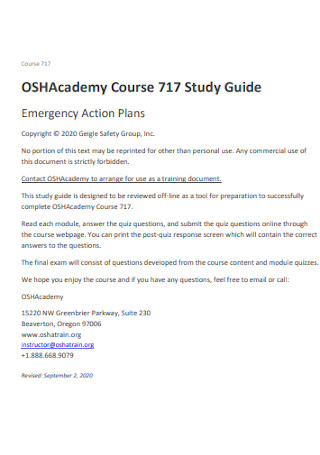
Emergency Study Action Plan
download now -
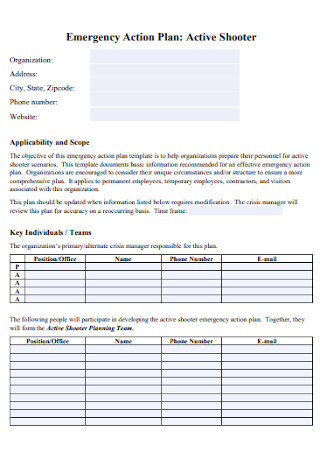
Shooter Emergency Action Plan
download now -
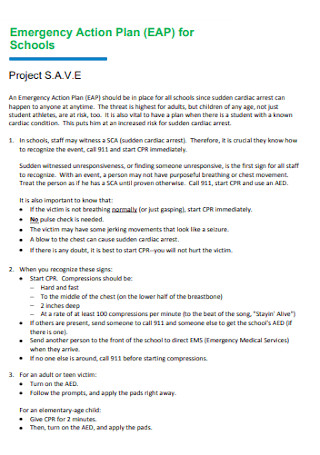
Emergency Action Plan for Schools
download now -
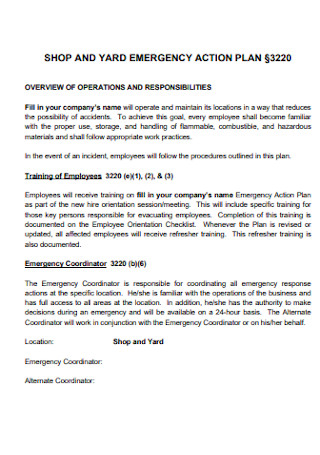
Yard Emergency Action Plan
download now -
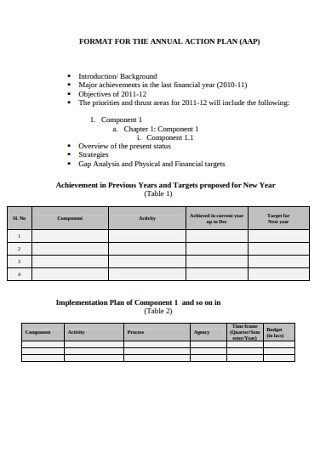
Emergency Annual Action Plan
-
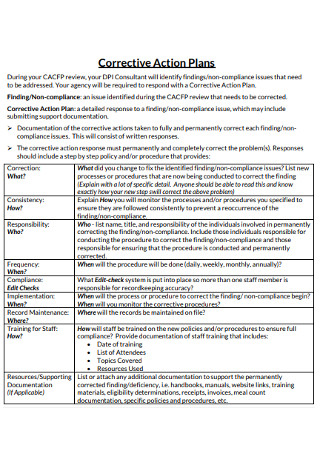
Emergency Corrective Action Plans
-

Special Event Emergency Action Plan
download now -
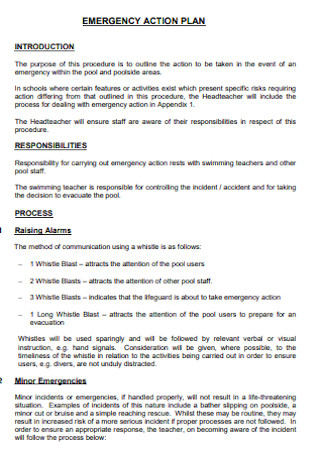
Emergency Action Plan for Primary School
download now -
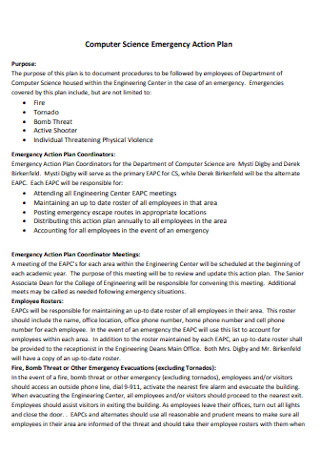
Computer Science Emergency Action Plan
download now -

Emergency Healthcare Action Plan
-
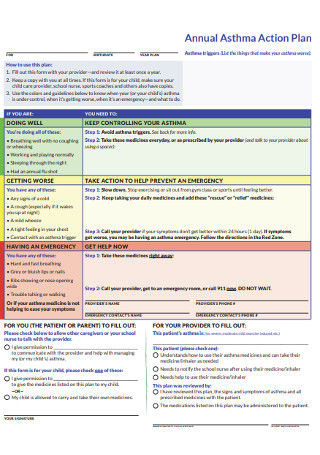
Emergncy Annual Asthma Action Plan
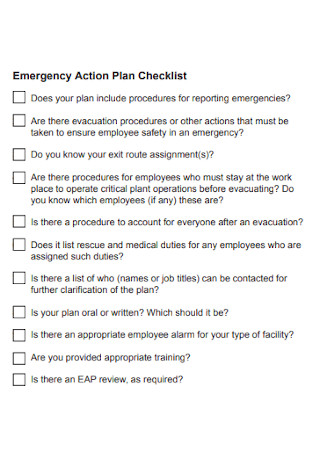
Emergency Action Plan Checklist Example
download nowFREE Emergency Action Plan s to Download
50+ Sample Emergency Action Plans
What Is an Emergency Action Plan?
What to Include in an Emergency Action Plan
The Three Basic Categories of Emergencies
How to Make an Emergency Action Plan
FAQs
What are examples of hazardous substances?
What are the types of emergency situations?
What should be the perfect EAP checklist?
What should you not do in responding to an emergency?
What Is an Emergency Action Plan?
The emergency action plan is an official written document that highlights how an organization responds to different emergencies. And it is a must for every workplace to implement it as part of their safety plan. The EAP will be introduced to employees in a business so they will learn how to lessen personal injuries, property damages, and other hazards.
It has been reported that OSHA requires organizations that run with hazardous chemicals to comply with 29 CFR 1910.38 for an emergency action plan.
Meanwhile, the Federal Emergency Management Agency (FEMA) suggests that there are four major steps in the emergency planning procedure—set a planning team, analyze the hazards and capabilities, create the plan, and follow the plan.
Why Are Emergency Action Plans Important?
EAPs are important to ensure that organizations observe emergency preparedness in the office or workplace. If there is a fire, flood, earthquake, injury, or hazard at work, how will your company respond to it? That is what the emergency action plan should answer. It works like a safety checklist where every procedure to be taken is listed to ensure security for operations continuously. Hence, employees will not have to panic since they will be taught and trained on how to adjust during emergency situations already.
Also, emergency action plans are beneficial for all sorts of industries. Besides the typical office setup, you can implement an EAP for a construction site, a sport, or even in school. Some construction workers might get injured while working. Meanwhile, members of athletic training may require first aid upon practice. And on the other hand, every student in school should be safe in responding to calamities and hazards as well. Therefore, EAPs apply to various sectors.
What to Include in an Emergency Action Plan
Every emergency action plan varies from one organization to another. But there are standard elements to incorporate that will help come up with a complete EAP. So to complete your plan, be sure to include the following elements into your emergency action plan:
The Three Basic Categories of Emergencies
Every emergency is divided into three major categories. And you should identify what category your enlisted emergencies in the EAP are in so you will not mix them up. So as a quick reference, the basic categories of emergencies are:
Emergencies Inside the Building
From the term itself, this category refers to all emergencies that happen within the building or facility. Examples include a shooting incident, power outage, fire, and more. So when an emergency is labeled here, it is already clear to work internal factors rather than external factors.
Emergencies Outside the Building
Meanwhile, emergencies that are caused by calamities or factors that are not in control within the facility are under emergencies outside the building. The most common examples would be facing extreme heat, tornados, lighting, and many more.
Health-Related Emergencies
On another note, the third category refers to health-related emergencies. That means factors affecting the health of employees or members of an organization are of concern. This section includes covering a seizure, concussion, heart attack, etc.
How to Make an Emergency Action Plan
FEMA suggests that four steps are associated with the emergency planning procedure. These are setting a planning team, analyzing hazards or capabilities, creating the plan, and following the plan. And that is just what you should follow in making the EAP too. With the help of sample emergency action plans, rest assured, the process could have not been easier. Kindly follow these steps:
Step 1: Form Your Planning Team
An emergency action plan should not just be made and considered by one person. It takes a team in one organization in the first place. So every member’s opinions will also matter. Gather reliable people to work within the emergency planning process. Assign roles until everyone agrees on the company’s emergency action plan mission statement. And you will decide how much budget to allocate for the plan and a proper schedule of when to manage the tasks to complete the mission.
Step 2: Conduct an Analysis on Capabilities and Hazards
Expect to analyze the capabilities and hazards that are relevant to your facility or workplace. First of all, are you dealing with a sports group, high school department, or maybe a project site? Your purpose helps you identify what underlying hazards should be analyzed there. And there are many things you could do in the analysis from reviewing the internal policies, recognizing regulations, checking the essential products or services, assessing potential impact, and scrutinizing your facility’s external and internal resources.
Step 3: Create the Plan by Inserting Its Components
Begin writing the whole emergency action plan by completing its significant components, which you already learned earlier from what to include in an EAP. So from the basic information down to training, add the finishing details. You start highlighting the components, challenges, and actions to take until you write them clearly. What follows after would be to revise what you wrote and have it approved by the organization’s supervisor. And most importantly, share that plan with every person of concern so they will be properly introduced to the official EAP.
Step 4: Stick to the Plan Rigidly
An emergency action plan is not just for show. It should be followed strictly from where to evacuate, what medical emergency service to provide, and so much more. In observing the plan, there will also be learnings involved until you may come up with recommendations and feedback on how to improve the EAP next time. Hence, there is room to edit the plan if necessary. Go for whatever works best to handle emergencies in your organization to keep operations afloat.
FAQs
What are examples of hazardous substances?
Common examples of hazardous substances are butadiene, ethylene oxide, and methylenedianiline. And there are many more detrimental and hazardous chemicals that are prohibited so that safety is managed accordingly in a facility. Always consider an inspection for possible hazards before the worst circumstances might happen.
What are the types of emergency situations?
It is known that there are five basic types of emergency situations. And they consist of the following:
- Workplace hazards (chemical spill, power outage, vehicle accident, faulty equipment)
- Natural disasters (flood, storm, lightning)
- Environmental hazards (animal attack, drowning, fallen debris)
- Catering hazards (fire injury, food poisoning)
- People (bomb threat, suicide, medical condition, intoxication)
What should be the perfect EAP checklist?
Although emergency action plans differ among organizations, it would be pleasant when you include these facets into your EAP checklist: evacuation protocols, emergency reports, emergency alerts, EAP accounting, parent/guardian notifications, new hire training, emergency contact list, and regular policy updates.
What should you not do in responding to an emergency?
Indeed, it is great to be well-prepared for emergencies. But you have to be careful of overreacting and reacting the wrong way in responding to certain emergencies too. For example, you can’t just contact 911 if the emergency isn’t life-threatening. Also, avoid eating, drinking, or even smoking at a facility where a chemical spill or explosion took place. Who knows what you could ingest there? Lastly, only go to the designated meeting area stated in the plan when you flee from an emergency.
Annually, emergencies affect all sorts of businesses. And these will not only affect money but also the lives of every employee. Thankfully, you can lessen and prevent any possible damage, injury, or problem and recover from emergencies with a strategic plan made specifically for emergency preparedness. Hence, start making your own comprehensive and well-thought-out EAP using sample emergency action plans. Download now!
